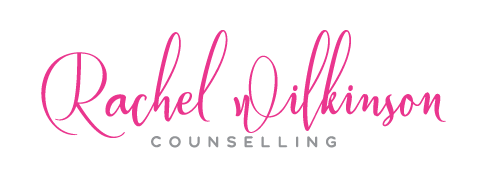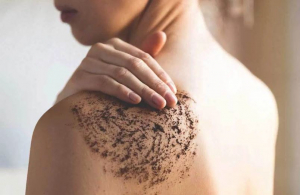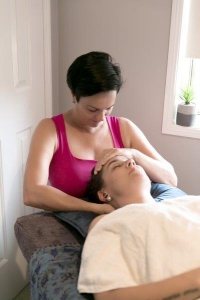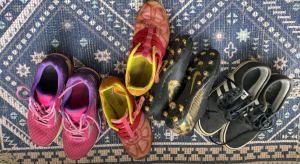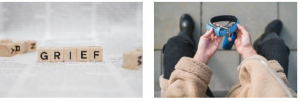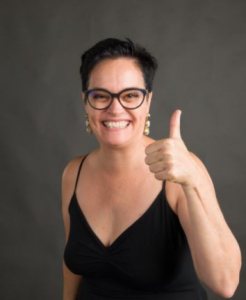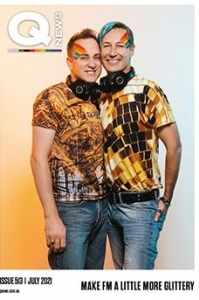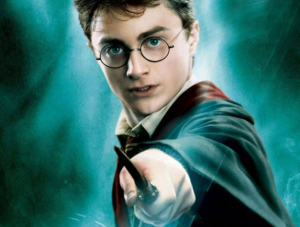Sometimes every bad thing you have experienced comes smashing up to meet you – trauma, grief, loss, rejection, attachment wounds, bullying, loneliness, separation, poverty, emotional dysregulation, anxiety, depression, domestic violence, addiction, family and relationships. These were some of the subjects and themes covered in my masters degree in counselling. I needed to face these all to understand myself, my family and the world better.
At 52,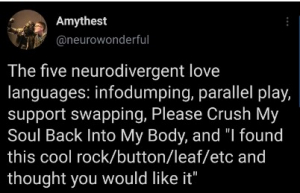 I discovered I had ADHD, and RSD, a little OCD, and some fine ODD – all the acronyms. Then I had no CTFD hormones so that’s when things started to fall apart but then come back together in a different way. Piece by freaking piece. Discovering my personality was made up of a range of symptoms was very isolating and strange, it made me question my identity, look back at my life through a different lens, and wonder what could have been. No point doing that though, I have too much to do now, educating families on how this shows up, how it can be hereditary (76%), how it is almost often in adoptees, (80%) how we try to hide our weirdness, because we think we are too much. I want to shine a big light on the people-pleasing, avoidant, overcompensating and often exhausting behaviour people with ADHD exhibit, provide some useful examples of how this can show up in women and girls, and advocate these are not personality quirks and it’s not a fad, or a phase, it’s a difference in our brains, which we can’t change and not everyone is a bit AC/DC thank you very much.
I discovered I had ADHD, and RSD, a little OCD, and some fine ODD – all the acronyms. Then I had no CTFD hormones so that’s when things started to fall apart but then come back together in a different way. Piece by freaking piece. Discovering my personality was made up of a range of symptoms was very isolating and strange, it made me question my identity, look back at my life through a different lens, and wonder what could have been. No point doing that though, I have too much to do now, educating families on how this shows up, how it can be hereditary (76%), how it is almost often in adoptees, (80%) how we try to hide our weirdness, because we think we are too much. I want to shine a big light on the people-pleasing, avoidant, overcompensating and often exhausting behaviour people with ADHD exhibit, provide some useful examples of how this can show up in women and girls, and advocate these are not personality quirks and it’s not a fad, or a phase, it’s a difference in our brains, which we can’t change and not everyone is a bit AC/DC thank you very much.
ADHD
This is a difficult post to write because I am outing myself, but also freeing myself at the same time. Just over a year ago, well one year and four days to be exact, I received a diagnosis of ADHD. I had been working with children and families with autism spectrum disorder (ASD) and attention deficit hyperactivity disorder (ADHD) and I kept normalising their sensitivities to sound, light, sensory things like tags in clothing, belts, zippers, creases in socks etc, hyper fixations like gaming, technology, pets, new things they loved and wanted to tell me about. I was always all in. I’ve known I was all or nothing for a long time which is why I had to stop drinking but didn’t realise all or nothing was a trait of ADHD.
Hyper fixation
People with ADHD can sometimes be prone to addictions or hyper fixations. We may love one type of music to motivate us and another to help us sleep. We are lacking in dopamine which is the reward chemical, which means we can’t really muster up the enthusiasm to do tasks we are not interested in. This is why I hate to cook but I am very competitive at card games and sport. I don’t get enough of dopamine or rush from the ordinary. I can see how this lead me to chase variety in travel, careers and new environments as they almost always had to be stimulating, until they became mundane and I found the next new thing.
Attention Deficit
Looking back, I can see now why I worked in marketing, law, advertising, fundraising, education throwing myself into careers which were busy and reactive. I now understand why I resigned or was asked to leave positions in insurance, retail, and banking. Spreadsheets literally make me want to fake my own death. A teacher once told me once I had the personality of a radio announcer. This wasn’t flagged as attention deficit, however, as I didn’t present as hyperactive, I just played softball, netball, cricket, ran, swam, and rode a bike so nobody noticed. In those days only boys had ADHD. Being overlooked as inattentive meant I dropped maths after failing for a few years, took up three-unit English, and went to Uni to do communications. This allowed me to follow a diverse range of teachings including research, design, photography, pop culture, script writing, creative and feature writing and various society and culture subjects. People with ADHD get bored easily because we don’t get regular dopamine hits like neurotypical or normal people.
Dopamine chasing
I started chasing dopamine early as a child by collecting rocks, coins, books then later people. Once we get the dopamine hit, we move on. After graduating uni, I still got a lot of my dopamine from courses and study, getting diplomas in clinical massage, counselling, all my reiki certificates, infant massage, shiatsu, kids’ yoga – all for the learning rush. I spent years to overcome social anxiety and manage workplace stress. I know people with huge stashes of craft supplies, art supplies, projects left unattended but kept in case we want to resume them. We don’t. We can often get in the way of ourselves because it is difficult to stay in the one place, focus on one thing as there is always so much which hijacks our interest. We are forgetful as we are so often called away to something more interesting, so we burn dinner while looking at an old photo album or hearing a song on the radio which reminds us of a friend we need to call. I discovered washing dries by itself rumpled in the clothes basket outside after a few days, because the fire alarm went off for the meal I forgot I was cooking. Hence the distractibility and all the lists and emails and notes to self.
Addiction
ADHD can often head in the way of addiction, sometimes we don’t reach our full potential and wonder why we don’t have the discipline of others. We get compulsions and have difficulty with impulse control which might include online shopping, drinking, gambling, substances, relationships, gaming, exercise, routine, avoidance of things, like sticking to certain types of foods, colour schemes or surroundings which bring us comfort. Like many people, I thought ADHD was the boy climbing on the table in Year 2 or the kid who would not sit still. Sometimes it’s the girl staring out the window in maths or writing song lyrics on her phone or drawing on her arms or legs and hiding it under her skirt at school. For me, I can now look back with compassion at my 13-year-old self, hiding in a cupboard frozen with anxiety and shame at not being able to speak on the phone to a boy. The shame was then compounded by a family member going to school and telling my friends what happened. At 14, an older boyfriend gave me soccer raffle tickets to sell. He was surprised when I returned then whole book sold. I bought them with my own money and after I found out he was cheating on me, I detailed the 50 individual tickets with teeny suggestions on each one with how to treat women better, how he needed to be more honest, and that he had hurt me so much I could never possibly love again. We take rejection hard.
Rejection Sensitivity Disorder
This is due to our pre-frontal cortex which is the executive functioning of our brain not working as effectively as it could. So, the limbic system and the amygdala, parts that govern emotions and instinctive fight, flight, freeze parts ramp up to protect us. Rejection Sensitivity Dysphoria is unique to those with ADHD and results in intense emotional pain felt in response to being teased, criticized, or rejected. The hard part about this is often kids who are a little different or may be neurodivergent can often be the target of bullying so will do everything in their power to avoid rejection which can often mean masking.
Masking
We watch how others behave, practice, and rehearse these behaviours, gestures, the way people laugh, dress, what they say and then we do that. This could explain why I wore jodhpurs for several years because the compression on my body meant I could stay connected and in the present unlike swooshy, sweepy, frilly clothes which are scary and pointless. Which leads me to the part about having strong opinions and no filter. For whatever I said before I knew I had ADHD I am sorry. It was probably true though. So sorry, not sorry. Having no filter and overthinking means if I don’t say it, I will overthink it later. Should I have held my tongue about the hotel room in Coolongatta in 2014 which reeked of mould and kept me awake at night even though no one else in my family could smell it? To keep the peace should I have not complained to management and disrupt everyone ordering them to move out with all the stuff they had already unpacked to another floor? So often there is so much going on in our head all the time, impacting our senses from all angles, we have to speak up about things. Even if they are not socially acceptable. Social is hard for us.
I had to learn small talk; it was never modelled to me until I started working. What the heck do I care about weather or football teams or what you did on the weekend? Our family did medium/deep talk. I prefer the in between, not too light, not too heavy (unless we know each other and I can trust you) so I prefer just kind of in between, like Goldilocks talk. People with ADHD overthink things, we practice how things might go in our minds or be overly polite, compliant, and b people please to avoid rejection. We may also make up reasons why we can’t go to your thing which might be full of people we don’t know, who we expect might be judging us, even though they are not, or it might be too loud, too bright and make us feel overwhelmed.
Sensitivity
Turns out, that’s a thing too with ADHD we are extremely sensitive, not just empathic, but we love harder, hurt harder, get way too excited, try to save everyone, push ourselves too much and then burn out. We avoid situations which may cause sensory overload, my kids know I can only last three shops in Westfield before I need to stop for a meal or a coffee or take a bathroom break to retreat from the competing noise, smells, colours, lights, people.
Diagnosis and Coping Strategies
My brother kept nudging me to get assessed as he noticed traits. In typical all or nothing fashion I waited until I was almost completely overwhelmed and broken. With one more semester of my post-grad degree looming, I was trying to keep all the balls in the air, I was managing my daughters’ chronic fatigue and inability to attend school, studying two subjects, and working two jobs from home as a solo parent, then I lost a client to suicide. I booked the appointment on line as phoning gets too hard, I walked in dropped my handbag with the diary, pens, lipsticks, laptop, tissues, snacks, all the things to the floor of my doctor’s office, slumping into the chair in tears saying, ” I think I have ADHD,” She looked at me, nodded and said, ” Of course you do.” She had managed my health for over 7 years and supported me through menopause, insomnia, minor car accidents, burnout, and stresses with work and family. I was thankfully able to reschedule clients, take a week off work and go away to the beach with my dog and Netflix and dining in. It was enough to calibrate my nervous system and steady myself for the next bit which was a study trip to India.
The timing of my trip, which was scheduled to coincide with completion of my degree was a lifesaver. Breathwork and meditation help me to slow down. I came back, bought a house, became a landlord, completed my last semester with medication receiving distinctions for every paper I submitted. I was offered a position as a psychotherapist two weeks before I submitted my last assignment. After almost 3.5 years, I’m graduating at the end of this week. See all or nothing.
The thing with ADHD in women is, we mask, we try to blend in, we pretend we are holding all our shit together until we can’t. Menopause made everything worse for me as the calm the heck down hormones disappeared and I had given up alcohol. I noticed my anxiety ramped up, I was irritated, sleepless, tired, forgetful, and late. If you are feeling any of these things or want to chat about your own symptom management I am here. You are going to be ok.
It is reassuring to know when ADHD people we are well rested and not completely overstimulated we bring so many amazing qualities of empathy, random info dumping, enthusiasm, entrepreneurial ideas, amazing creatives, recyclers, friend gatherers and advocates. We want to save the world, all the animals and stop baby plovers falling into drains. If I can help you or someone in your family because this is 76% hereditary, please get in touch.
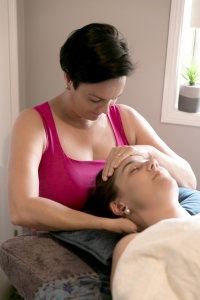 Reiki, pronounced Ray Kee, is a unique therapeutic practice that originated in Japan. This technique focuses on restoring balance to the body’s energy centers, promoting overall well-being. With a history dating back to the 1920s and its introduction to the West in the 1970s by a Hawaiian Japanese woman, Reiki has been passed down from teacher to student. Scientifically proven to have positive effects on the nervous system and mood, Reiki generates a sense of calm and utilizes hands-on therapy, often accompanied by gentle heat. Acting as a facilitator, a Reiki practitioner taps into the universal energy flow, assisting the body in aligning and rebalancing itself.
Reiki, pronounced Ray Kee, is a unique therapeutic practice that originated in Japan. This technique focuses on restoring balance to the body’s energy centers, promoting overall well-being. With a history dating back to the 1920s and its introduction to the West in the 1970s by a Hawaiian Japanese woman, Reiki has been passed down from teacher to student. Scientifically proven to have positive effects on the nervous system and mood, Reiki generates a sense of calm and utilizes hands-on therapy, often accompanied by gentle heat. Acting as a facilitator, a Reiki practitioner taps into the universal energy flow, assisting the body in aligning and rebalancing itself.